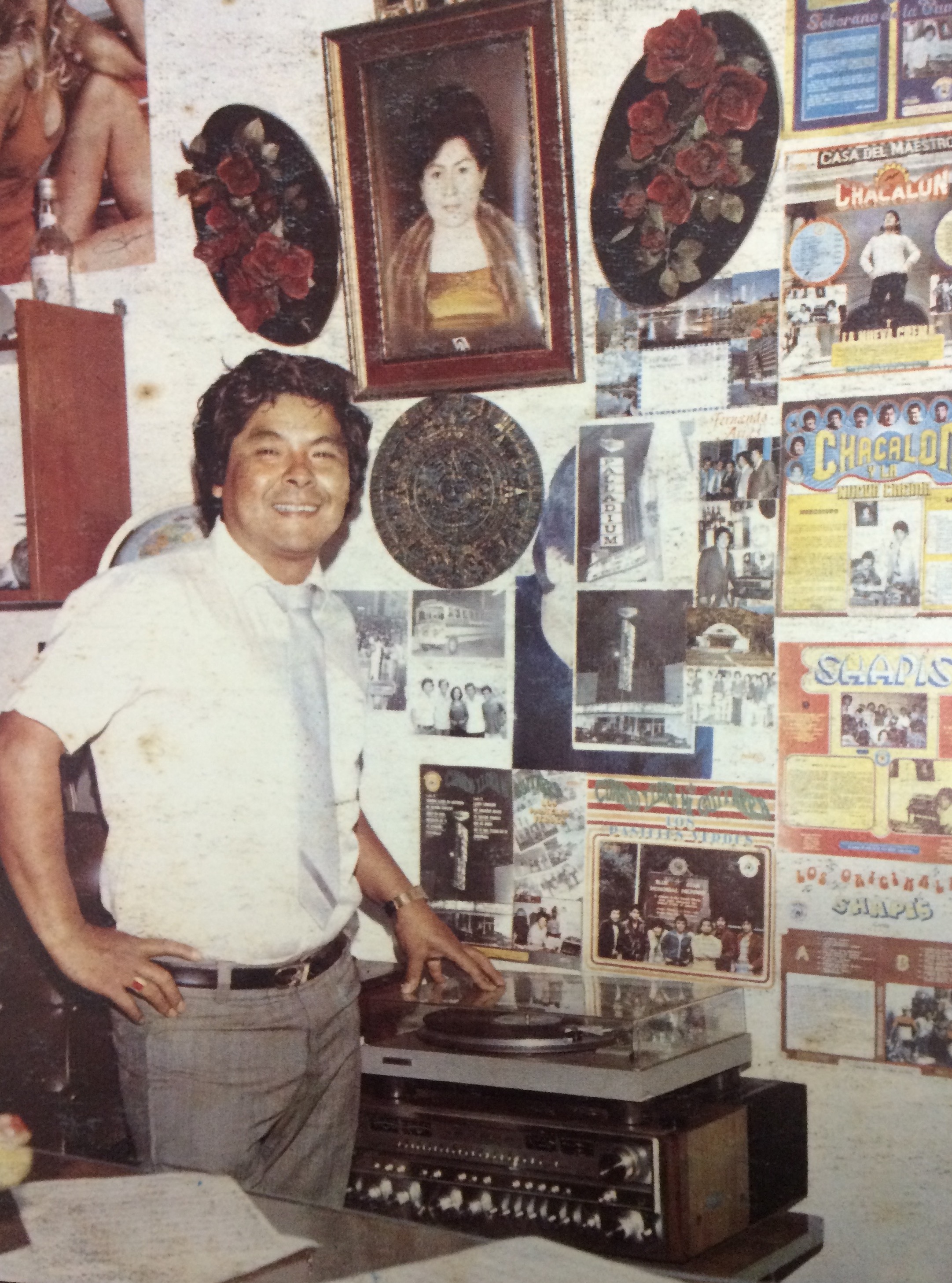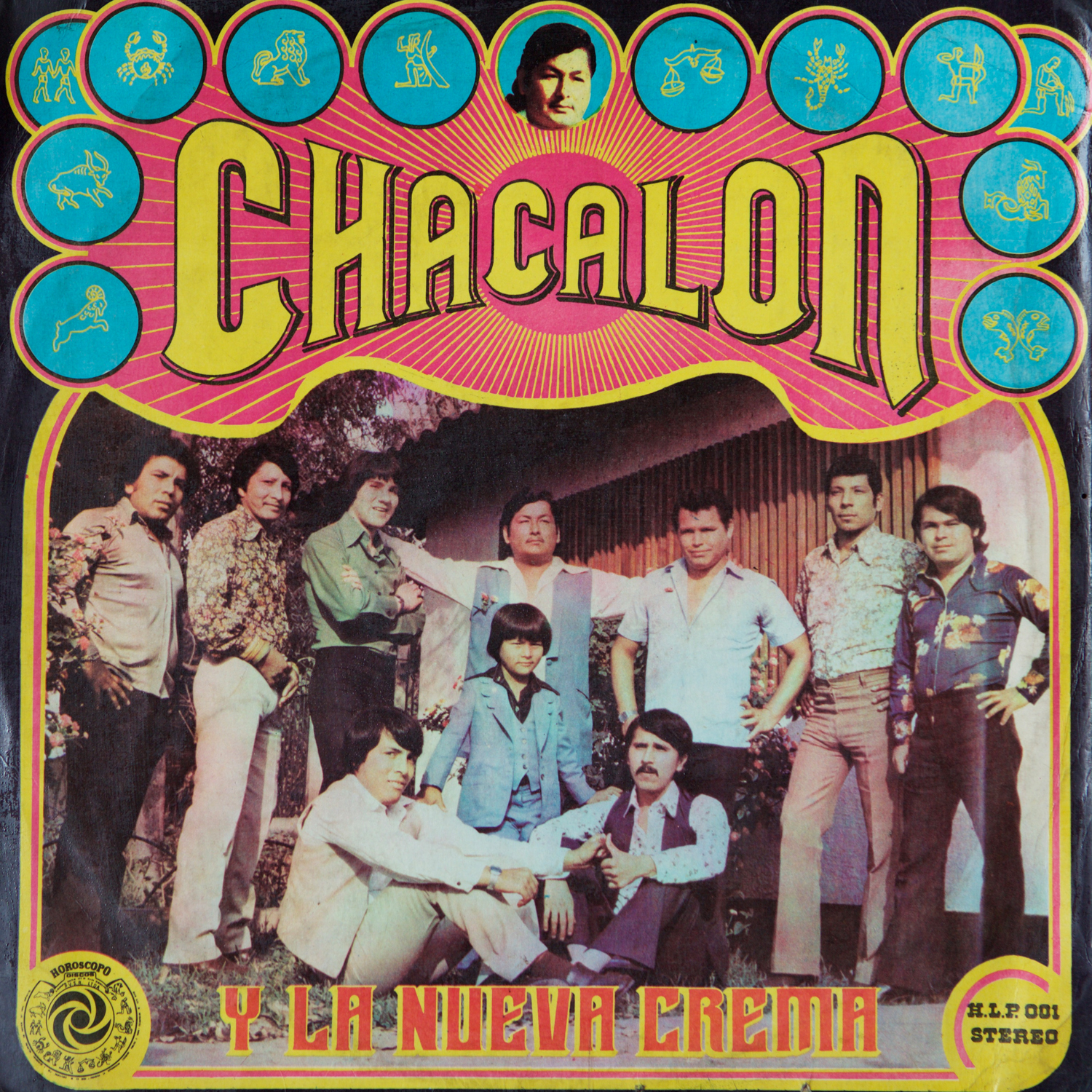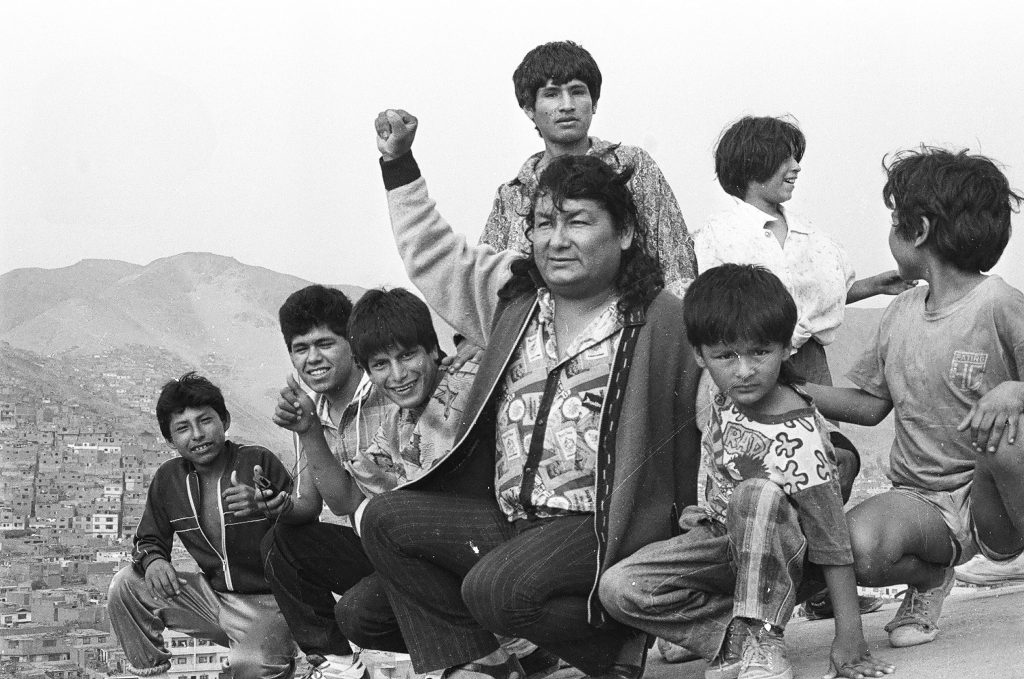When a small, unassuming record label called Discos Horóscopo started in Lima 40 years ago, few predicted that it would balloon to mythical heights and become a symbol of chicha music. Horóscopo powered the careers of chicha’s most renowned acts, including Chacalón, Los Shapis, Los Ovnis, and more.
While fans will always remember Horóscopo’s artists, the label heads have largely been forgotten. Peruvian producer and director of Plastilina Records Jalo Núñez Del Prado is out to change that. He’s leading an ambitious effort to relaunch Horóscopo and release new editions of the label’s most celebrated recordings, with the help of a crowdfunding campaign announced today. Based in Lima and Madrid, Núñez Del Prado also plans to host conferences and organize exhibitions to bring international attention to an emblem of Peruvian culture.
Breathing new life into an iconic label is easier said than done. Núñez Del Prado has had to travel back in time to understand the full scope of what chicha means to Peruvians — and across Lima to find one of the genre’s most elusive pioneers, Horóscopo founder Juan Luis Campos Muñoz, who vanished from public view 30 years ago.

There’s a deep archive of anthropological and sociological studies about the history of chicha. In the 1960s, mass migrations drew Andean rural and indigenous people to Peru’s city centers in droves. Newcomers brought their unique Andean identities and culture, which included huayno rhythms and melodies. However, they also faced marginalization and social friction in their new homes. Lima was no exception, and in the capital, rural residents carved out their own spaces by mixing their traditions with modern customs of the city.
Peruvians have a role to play in celebrating a working-class genre that belongs to them.
One of these cultural fusions came when Lima residents started to collide huayno, Cuban guaracha, psych, and popular styles of Colombian cumbia. The blend became known as chicha, a rock-fueled style of cumbia that anthropologist Gisela Canepa calls an “itinerant musical expression.” In essays, she explains that chicha “evolved into an expression of migrants, especially initially, when themes such as migration, nostalgia for the ‘place of origin’ and hopes for a new city life were central in the lyrics of its song.”
Chicha narratives become less defined when you take them out of academic contexts. The genre is full of local characters whose names aren’t always in textbooks, and Campos is one example of these unsung heroes. According to Peruvian journalist Manuel J. Orbegozo’s research, provided to Remezcla by Discos Horóscopo, Juan Luis Campos Muñoz was a truck driver who owned an auto workshop in the town of Barranca. One day, a group of parents asked him for ideas to replace the local school’s only water fountain. Campos thought of organizing a concert as a fundraiser and recruited Los Pasteles Verdes, a ballad band he knew. The concert was a success, and inspired Campos to plan more events.
When Los Pasteles Verdes approached Campos about starting a record label, Campos accepted — even though Los Pasteles Verdes eventually abandoned the project. Stuck in a business he didn’t know much about, Campos enlisted the help of Victor Mayorga, a former record label employee who familiarized Campos with cumbia and chicha sprouting throughout Lima.
Mayorga also introduced Campos to a man named Lorenzo Palacios Quispe, better known as the larger-than-life star Chacalón, el faraón de la cumbia. Hailing from El Agustín, Chacalón had grown up singing boleros on the streets to raise money for his family. A 2014 Sounds and Colours article explains that Chacalón’s mother was a woman from the Andean highlands who sang huayno, and Chacalón’s familiarity with Andean styles imbued his own music with a bittersweet melancholy that resonated throughout Peru.
Campos officially launched Discos Horóscopo in late 1976 and helped catapult Chacalón to fame by recording some of his most popular songs with the band La Nueva Crema. Chacalón, along with prominent groups like Los Shapis, ushered in Horóscopo’s 12-year golden era. Campos won a reputation for having “a Midas touch.” His Lima offices would be full of aspiring musicians, eager to join Horóscopo’s roster of musical talents. Campos opened a radio station, started two afternoon television programs, and sold out venues built for thousands.

But during that time, other factors changed the course of the label. According to Orbegozo, music piracy in Lima hit a peak in the late 80s. Horóscopo began losing money, despite Campos’ best efforts to adapt. Campos grew disillusioned when his bands started leaving the label, so he walked away from Horóscopo in 1989. Few people knew where he was for decades, until Núñez Del Prado came along.
Relaunching Horóscopo is a way of bringing chicha back home to its roots.
To understand Núñez Del Prado’s fascination with chicha, picture him as an eight-year-old boy in Lima. It was 1994, and everyone seemed to be talking about the death of someone called Chacalón. Portraits of a man sporting slick-backed hair and psychedelic shirts covered the front pages of the major newspapers. Every television broadcasted a funeral in Lima’s Cementerio El Ángel, attended by somewhere between 20,000 and 60,000 people, according to different outlets. Journalists compared Chacalón to Elvis Presley; fans cried in the streets. “I just saw thousands of people in tears,” Núñez Del Prado remembers.
Although he never forgot that day of national mourning, Núñez Del Prado was consumed by rock and indie music as a teenager, paying less attention to the ubiquitous chicha that played in supermarkets, buses, and cars all over Lima. One day, he came across cover art Los Shapis had modeled after The Ramones, and quickly bought the record. He was intrigued again in 2002, when one of his favorite labels, Nuevos Medios, remastered a Chacalón Y La Nueva Crema compilation. The recording completely changed how he heard chicha; it brought out the crystalline guitars and restored raw energy into the music.

Núñez Del Prado fell deeper into chicha and dove headfirst into the rest of the Horóscopo catalog. As his own career in music took off, Núñez Del Prado dreamed of remastering Horóscopo’s greatest hits. He became more determined after hearing rumors that other producers wanted to release the sounds illegally and decided there was one thing to do: find the missing Campos and get his permission to bring more of Horóscopo into the 21st century.
“That’s where the adventure began,” Núñez Del Prado said.
Núñez Del Prado spent six months tracking Campos down in 2015. He found a YouTube interview (now removed from the platform) that a local Barranca poet had done with the former record impresario 10 years earlier. With the help of the Barranca municipality, he located the poet and learned something surprising from him: Campos had been in plain view all along. When he quit the music industry, he had gone back to the same car shop he had owned in Barranca. Núñez Del Prado drove five hours from Lima to Barranca, eventually coming face-to-face with Campos at his front door.
Campos is now a modest 85-year-old with deep creases around his eyes. Over the years, a handful of music executives have knocked on his door, but Campos had always sent them home, insistent that his record days were over. While he looked skeptical when Núñez Del Prado first arrived, he invited him inside. Núñez Del Prado revealed that he was a fan and a label director himself. Campos grew intrigued and started asking questions: How many records did Núñez Del Prado sell? What were his artists like? By the end of the conversation, Núñez Del Prado had ignited the music lover in Campos and won his approval to move forward with the Horóscopo relaunch.

Núñez Del Prado found Campos just at the right time. Cumbia and chicha have caught the attention of Western audiences in about the last 10 years. DJs and producers from around the world have taken the genre into new electronic directions. In 2007, Barbès Records published the seminal compilation The Roots of Chicha: Psychedelic Cumbias from Peru. Revival bands, like Chicha Dust and Barbès Records’ Chicha Libre, also contributed to the surge.
Moments like these are a quiet restoration of Campos’ place in history.
Although Núñez Del Prado appreciates the outpouring of chicha love, he sees relaunching Horóscopo as a way of bringing chicha back home to its roots. He says Peruvians have a role to play in celebrating a working-class genre that belongs to them, and embracing its history without appropriation from other cultures.
“I think sometimes, it can be hard to be conscious of what you have in your own country,” Núñez Del Prado said. “By making it international, it can open the eyes of Peruvians and illuminate how much people enjoy this symbol that is ours.”
But he’s also doing this for the old man he sat with for hours in Barranca. Núñez Del Prado says people don’t know who Campos is, despite chicha’s cultural impact. As news of the project has spread, Campos is gaining recognition bit by bit: Recently, a Lima newspaper published a four-page feature about Campos. In the article’s accompanying photographs, Campos stands in front of his auto shop, smiling somewhat shyly but with pride. Moments like these are a quiet restoration of Campos’ place in history.
“More than anything, it’s a project to recognize him. He’s been forgotten in this industry, and this is a chance to bring him into the spotlight,” Núñez Del Prado said.
Donate to Discos Horóscopo’s crowdfunding campaign here. Keep an eye out for the first Discos Horóscopo reissue, Chacalón Y La Nueva Crema, in June 2017.
Update 5/17/2017, 10 a.m.: A previous version of this post incorrectly stated that Los Shapis covered The Ramones. Los Shapis modeled cover art after The Ramones. This post has been updated to clarify the statement.







